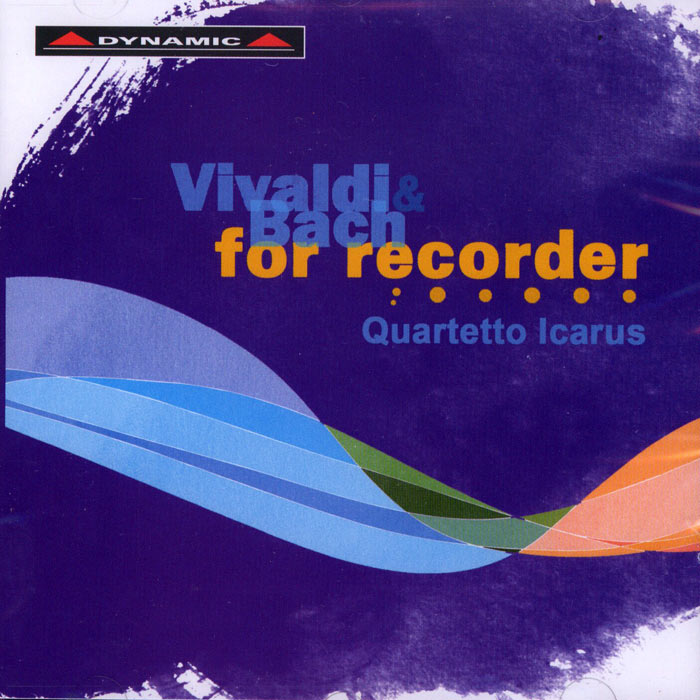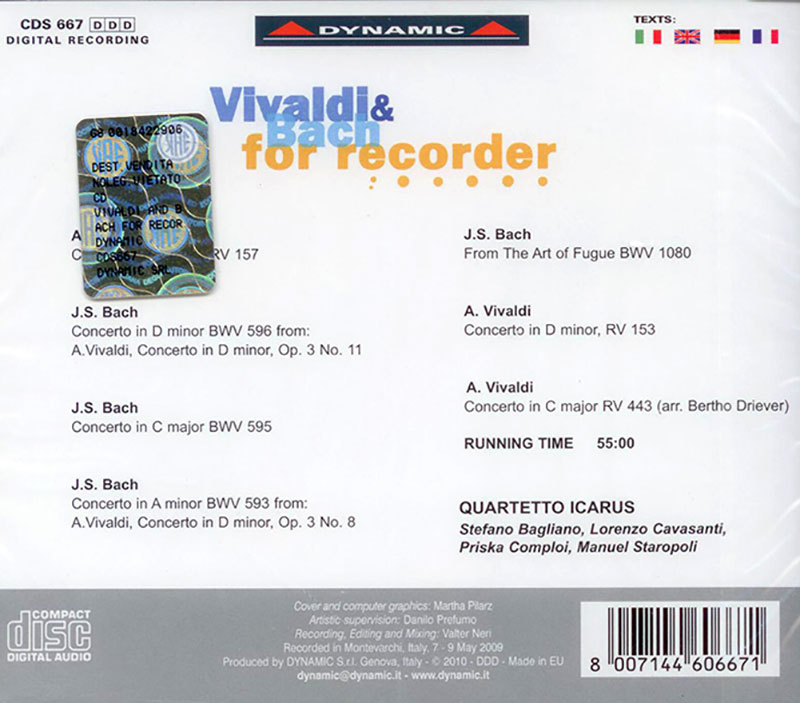Logowanie
Mikołaj - ten to ma gest!
Miles Davis, Horace Silver, Jay Jay Johnson, Percy Heath, Kenny Clarke, Lucky Thompson
Walkin'
20bit K2Super Coding - ale jak to brzmi!
Kasety magnetofonowe
Winylowy niezbędnik
ClearAudio
Double Matrix Professional - Sonic
najbardziej inteligentna i skuteczna pralka do płyt winylowych wszelkiego typu - całkowicie automatyczna
VIVALDI, BACH, Quartetto Icarus
For recorder

- A.Vivaldi (1678-1741)
- Concerto per archi in sol minore, RV 157
- Allegro (2:02)
- Largo (1:20)
- Allegro (2:18)
- J.S. Bach (1685-1750)
- Concerto BWV 596 da A.Vivaldi (1678-1741)
- Concerto in re minore, op.3/11
- Allegro (0:50)
- Adagio e spiccato (0:23)
- Allegro (2:56)
- Largo e spiccato (2:12)
- Allegro (2:29)
- J.S. Bach (1685-1750)
- Concerto in do maggiore BWV 595 (3:41)
- J.S. Bach (1685-1750)
- Concerto BWV 593 da A.Vivaldi (1678-1741)
- Concerto in re minore, op.3/8
- (allegro, adagio, allegro)
- Allegro (3:24)
- Adagio (2:57)
- Allegro (3:17)
- J.S. Bach (1685-1750)
- Da L’Arte della Fuga BWV 1080
- Contrapunctus I (3:23)
- Contrapunctus III (4:53)
- Contrapunctus IX (2:50)
- A.Vivaldi (1678-1741)
- Concerto per archi in re minore, RV 153
- Allegro (2:30)
- Andante (1:45)
- Allegro assai (1:27)
- A. Vivaldi (1678-1741)
- Concerto per flautino in do maggiore RV 443
- Allegro (4:14)
- Largo (2:50)
- Allegro molto (3:16)
- Quartetto Icarus - group
- VIVALDI
- BACH
Our recording presents pieces freely transcribed by both composers, with particular attention to Bach compositions drawn from the original Vivaldi repertoire. The quartet ensemble is well suited to the particular polyphonic writing of the compositions considered. The two Concertos for orchestra RV 153 and RV 157 offer an alternative to the solo concerto in their different type of scoring and structure; the Concerto RV 157 especially favours a particular instrumental group, contralto and tenor flute and two basses. The two Vivaldi Concerti in D minor (opus 3 n. 8 and n. 11) are living testimony of this artistic partnership between the two great composers; these are original Vivaldi concertos, later transcribed for a keyboard instrument (harpsichord or organ) by the Kantor of Leipzig. The version presented here is based on Bach’s transcription, with some interesting additions and embellishments. The well-known Concerto for piccolo RV is again presented in a particular new form with the four instruments challenging one another in feats of acrobatic virtuosity in which the listener certainly does not miss the violin. The three counterpoints of the Art of the Fugue need no interpretation, of course; Bach’s astonishing ability to use a musical subject and exploit its enormous harmonic and rhythmic possibilities leads us into a dimension in which music and science are blended in a sublime unity. Bach composed this collection between 1748 and 1749; left incomplete, it was published posthumously in 1750. WHY RECORDERS? The ”Quartetto Icarus” (Stefano Bagliano, Lorenzo, Cavasanti, Priska Comploi e Manuel Staropoli) have chosen to play this repertoire, originally written for strings or organ, employing the large family of recorders (from the soprano recorder in c’’ to the bass one in F). Ever since the Renaissance, recorder ensembles, together with mouthpiece instruments (such as the cornett and the trombone), have been the best alternative to string instruments. They are perfectly suited to perform a polyphonic repertoire where all parts have the same importance. Several of the pieces featured in this recording were originally written for organ, which is almost a sort of mechanical ensemble of recorders: organ-pipes and recorders produce sound in the same way. The close relationship between these two instruments makes the quartet of recorders the perfect ensemble for performing these splendid compositions.































